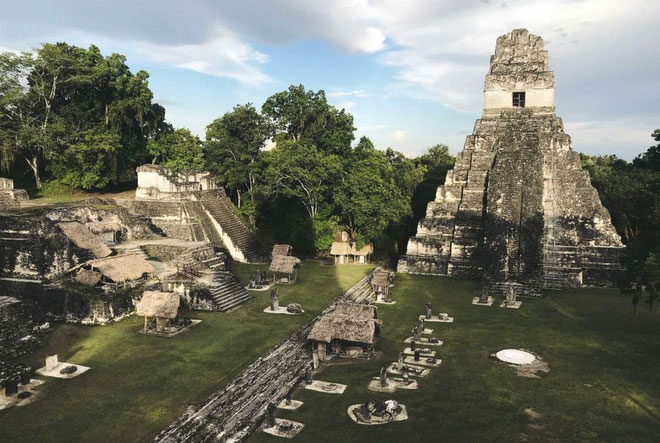In a new study of the Mayan civilization of Central America, ancient human fecal samples show how the size of this community changed dramatically in response to climate change.
The researchers identified four distinct periods of the population size change as a response to particularly dry or particularly wet periods, not previously recorded: 1350-950 BC, 400- 210 BC, 90-280 AD, and 730-900 AD.
In addition, the flattened manure piles show that the city of Itzan – in present-day Guatemala – was inhabited about 650 years earlier than previously suggested by archaeological evidence. That’s a lot of information to get from human excrement.
“This study will help archaeologists by providing a new tool for looking at changes that may not be seen in archaeological evidence, as evidence may never have existed or may have been lost or destroyed. The Maya Lowlands are not good for preserving buildings and other records of human life because of the rainforest environment,” said biochemist Benjamin Keenan, from McGill University. .
The study used a relatively new analytical method based on fecal stanols – organic molecules in human and animal feces preserved in sediments in rivers and lakes dating back thousands of years.
The concentrations of these stanols over time, marked by layers of sediment, can provide researchers with clues to population change that can be backed up with other historical records. So far, stanols have proven to be an accurate indicator of how many people are living in a given place at a given time.
The stanols were extracted from a lake close to the Itzan site and measured based on what experts have known about the area over the past few thousand years and discoveries from traditional archaeological excavations. system.
Those findings were then compared with historical climate data, including evidence of rainfall and levels of pollen (indicating vegetation cover) left in the geological record. The researchers found some correlations but also some new population shifts in the ancient layers of analysis.
“It’s important for society to know that there were civilizations before us that were affected and adapted to climate change. By linking the evidence of climate change and population, we can begin to see a clear link between rainfall and the ability of these ancient cities to sustain the population,” says biogeographer Peter Douglas from McGill University.
The team was also able to use ancient fecal records to identify a population spike around the time of Spain’s 1697 AD attack on the last Maya stronghold in the vicinity. approach and an attack that historians have not recorded.
There are also points when the known high population numbers in Itzan do not match the volume of fecal stanols recovered. The researchers suggest that this may be because human excrement was used by this Maya community as fertilizer for crops.
All of this, which can be assessed from fecal remains left behind thousands of years ago, suggests that this analytical method could be a useful part of scientists’ toolkit when tracking changes in the environment. population changes since ancient times.
The researchers conclude: “The stanols in ancient human feces served as a transitional role for changes in human and animal populations in the landscapes of Mesoamerican cultures, while also providing insights on land-use change”.


